
As humanity prepares to bid farewell to this all-around heartbreaker of a year, you are going to see a lot of “Best of 2016” (and “Worst of 2016”) lists floating around. But none, I promise you, is quite like the Peabody Library’s Best of 2016 List. We asked our staff to share with us–and you–their favorite books, films, albums, or other Library materials that they encountered this year. The response was so terrific that we’ll be running a weekly series for your enjoyment.
And, just a note, the rules were that the media had to be consumed in 2016 (books read, films viewed, albums heard, etc.), but that doesn’t mean that they were made in 2016. There are some classics on this list, as well as plenty of new material, so you can see all the phenomenal finds the Library has to offer year round!

From the Upstairs Offices:
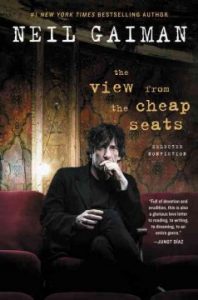 The View From the Cheap Seats by Neil Gaiman
The View From the Cheap Seats by Neil Gaiman
“This book got me thinking a lot about Imagination and Art and Creativity, things that have always been foundations for me but that I had started to lose touch with somewhere along the way. These essays and speeches renewed my energy for creative pursuits, and helped me think about their value in new ways.”
An enthralling collection of nonfiction essays on a myriad of topics—from art and artists to dreams, myths, and memories—observed in #1 New York Times bestselling author Neil Gaiman’s probing, amusing, and distinctive style.
An inquisitive observer, thoughtful commentator, and assiduous craftsman, Neil Gaiman has long been celebrated for the sharp intellect and startling imagination that informs his bestselling fiction. Now, The View from the Cheap Seats brings together for the first time ever more than sixty pieces of his outstanding nonfiction. Analytical yet playful, erudite yet accessible, this cornucopia explores a broad range of interests and topics, including (but not limited to): authors past and present; music; storytelling; comics; bookshops; travel; fairy tales; America; inspiration; libraries; ghosts; and the title piece, at turns touching and self-deprecating, which recounts the author’s experiences at the 2010 Academy Awards in Hollywood.
Insightful, incisive, witty, and wise, The View from the Cheap Seats explores the issues and subjects that matter most to Neil Gaiman—offering a glimpse into the head and heart of one of the most acclaimed, beloved, and influential artists of our time.
From the South Branch:
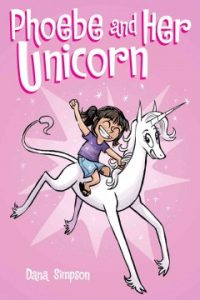 Phoebe and her Unicorn (vols. 1-4) by Dana Simpson
Phoebe and her Unicorn (vols. 1-4) by Dana Simpson
“These are easily the best comics I’ve read since Calvin and Hobbes. They are genuinely funny, charming and so original. A guaranteed laugh, perfect for light reading.”
It all started when a girl named Phoebe skipped a rock across a pond and accidentally hit a unicorn in the face. Improbably, this led to Phoebe being granted one wish, and she used it to make the unicorn, Marigold Heavenly Nostrils, her obligational best friend. But can a vain mythical beast and a nine-year-old daydreamer really forge a connection? Indeed they can, and that’s how Phoebe and Her Unicorn unfolds.
This beautifully drawn comic strip follows the unlikely friendship between a somewhat awkward girl and the magic unicorn who gradually shows her just how special she really is. Through hilarious adventures where Phoebe gets to bask in Marigold’s “awesomeness,” the friends also come to acknowledge that they had been lonely before they met and truly appreciate the bond they now share.
From the Reference Desk:
“Two fine books for the sports inclined”
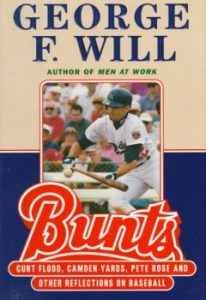 Bunts : Curt Flood, Camden Yards, Pete Rose, and Other Reflections on Baseball by George F. Will
Bunts : Curt Flood, Camden Yards, Pete Rose, and Other Reflections on Baseball by George F. Will
George Will returns to baseball with more than seventy finely honed pieces about the sometimes recondite, sometimes frustrating, always passionately felt National Pastime. Here are Will’s eulogy for the late Curt Flood (“Dred Scott in Spikes”), Will on Ted Williams (“When Ted Williams retired in 1960, a sportswriter said that Boston knew how Britain felt when it lost India. Indeed. Britain felt diminished, but also a bit relieved”), and on his own baseball career (“I was a very late draft choice of the Mittendorf Funeral Home Panthers. Our color was black”). Here are subjects ranging from the author’s 1977 purchase of a single share of stock in the Chicago Cubs, a purchase brokered by Warren Buffett (“a St. Louis Cardinal fan, but not otherwise sinister”), to the collision between Pete Rose and Bart Giamatti, to the building of Camden Yards in Baltimore, to the dismantling of the 1997 World Series Champion Florida Martins.
AND…
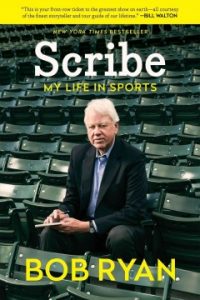 Scribe: My Life In Sports by Bob Ryan
Scribe: My Life In Sports by Bob Ryan
Ever since he joined the sports department of the Boston Globe in 1968, sports enthusiasts have been blessed with the writing and reporting of Bob Ryan. Tony Kornheiser calls him the “quintessential American sportswriter.” For the past twenty-five years, he has also been a regular on various ESPN shows, especially The Sports Reporters, spreading his knowledge and enthusiasm for sports of all kinds.
Born in 1946 in Trenton, New Jersey, Ryan cut his teeth going with his father to the Polo Grounds and Connie Mack Stadium, and to college basketball games at the Palestra in Philadelphia when it was the epicenter of the college game. As a young man, he became sports editor of his high school paper-and at age twenty-three, a year into his Boston Globe experience, he was handed the Boston Celtics beat as the Bill Russell era ended and the Dave Cowens one began. His all-star career was launched. Ever since, his insight as a reporter and skills as a writer have been matched by an ability to connect with people-players, management, the reading public-probably because, at heart, he has always been as much a fan as a reporter. More than anything, Scribe reveals the people behind the stories, as only Bob Ryan can, from the NBA to eleven Olympics to his surprising favorite sport to cover-golf-and much more. It is sure to be one of the most talked about sports books of 2014, by one of the sports world’s most admired journalists.

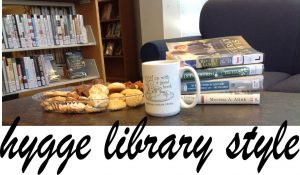
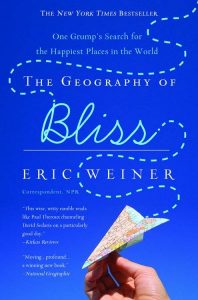 Having a pretty high standard of living, a strong social safety net, a good education system and a peaceful country certainly aren’t going to hurt people’s chances at finding happiness. But is there more to it than that? Reading
Having a pretty high standard of living, a strong social safety net, a good education system and a peaceful country certainly aren’t going to hurt people’s chances at finding happiness. But is there more to it than that? Reading 
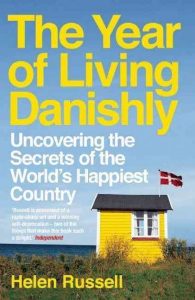 outside continues to intrigue me, so I was eager to read
outside continues to intrigue me, so I was eager to read 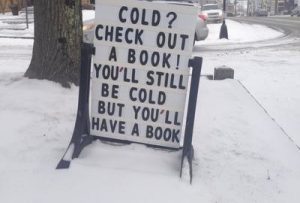
 Now, as I’ve said before: I realize that romance is a genre built on fantasy and wish-fulfillment. I no more expect verisimilitude from my romances than I think James Bond is a real guy, or that we can build dinosaurs from the DNA found in mosquitoes. As I’ve said previously, romance novels are a space where we get to talk about issues of gender, and where we can support the healthy expression of desire and the individual quest for a happy ending. They created a space where the social norms could be transgressed, and where women were given the space, the time, and the support, to discover what it was they wanted, and to go for it. More and more today, we see the inclusion and recognition LGBTQ community, as well. Non-heterosexual romances are becoming more and more prevalent, and I, for one could not be happier.
Now, as I’ve said before: I realize that romance is a genre built on fantasy and wish-fulfillment. I no more expect verisimilitude from my romances than I think James Bond is a real guy, or that we can build dinosaurs from the DNA found in mosquitoes. As I’ve said previously, romance novels are a space where we get to talk about issues of gender, and where we can support the healthy expression of desire and the individual quest for a happy ending. They created a space where the social norms could be transgressed, and where women were given the space, the time, and the support, to discover what it was they wanted, and to go for it. More and more today, we see the inclusion and recognition LGBTQ community, as well. Non-heterosexual romances are becoming more and more prevalent, and I, for one could not be happier.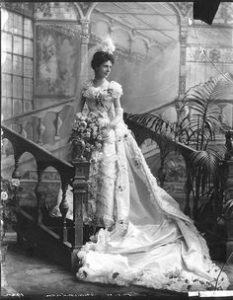 This is a very, very old problem in literature, specifically in American literature, than can be traced back to the myths and realties the 19th century (and earlier, to be honest), which we can discuss at length later. But, to be brief, there are two assumptions at play here: first is the Victorian (classist) assumption that marriage was only for white (wealthy) people. Therefore, a love story that doesn’t involve white people (and usually financially secure white people) becomes
This is a very, very old problem in literature, specifically in American literature, than can be traced back to the myths and realties the 19th century (and earlier, to be honest), which we can discuss at length later. But, to be brief, there are two assumptions at play here: first is the Victorian (classist) assumption that marriage was only for white (wealthy) people. Therefore, a love story that doesn’t involve white people (and usually financially secure white people) becomes 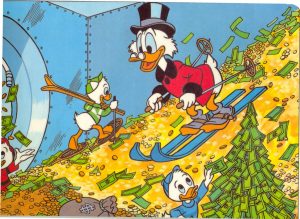
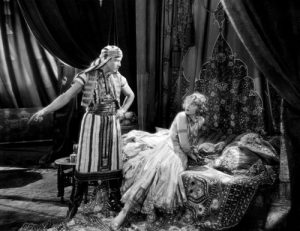
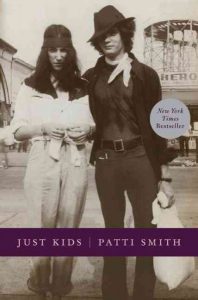 Just Kids by Patti Smith
Just Kids by Patti Smith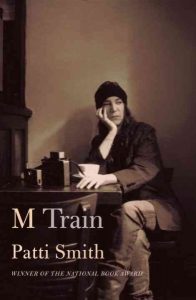 M Train by Patti Smith
M Train by Patti Smith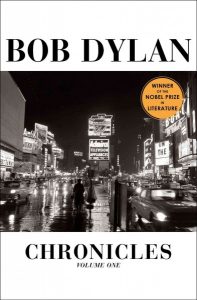 Chronicles: Volume One by Bob Dylan
Chronicles: Volume One by Bob Dylan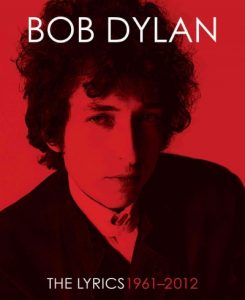 The Lyrics: 1961 – 2012 by Bob Dylan
The Lyrics: 1961 – 2012 by Bob Dylan I’m sure everyone has a holiday horror story of some type. Sometimes, no matter how hard we try, something goes wrong in the holiday prep a story ensues that will be told at future get-togethers. “Remember that time the turkey caught fire and we had to order pizza for the holiday dinner?” Horror is not all that uncommon this time of year, for authors, either. Whether this time of year is dorkily loved (like yours truly) or utterly reviled, sometimes you just need a break from the saccharine holiday cheer. We’ve already mentioned on the blog how books can be a great retreat, (particularly when there’s a blanket fort involved) and can have restorative measures. Well, sometimes a little antidote for holiday cheer is precisely what the doctor ordered.
I’m sure everyone has a holiday horror story of some type. Sometimes, no matter how hard we try, something goes wrong in the holiday prep a story ensues that will be told at future get-togethers. “Remember that time the turkey caught fire and we had to order pizza for the holiday dinner?” Horror is not all that uncommon this time of year, for authors, either. Whether this time of year is dorkily loved (like yours truly) or utterly reviled, sometimes you just need a break from the saccharine holiday cheer. We’ve already mentioned on the blog how books can be a great retreat, (particularly when there’s a blanket fort involved) and can have restorative measures. Well, sometimes a little antidote for holiday cheer is precisely what the doctor ordered.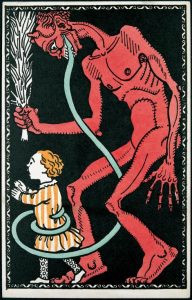
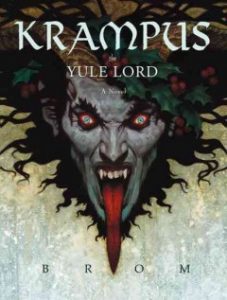
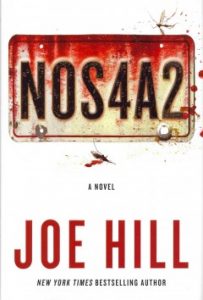
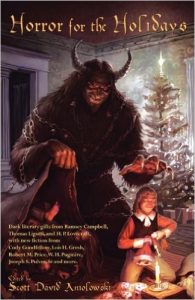
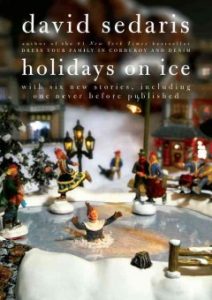
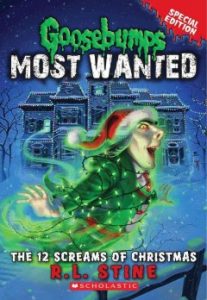

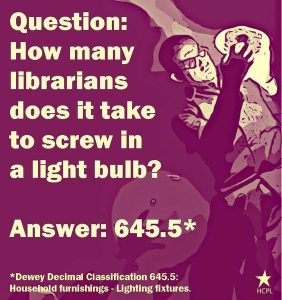
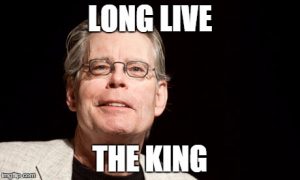

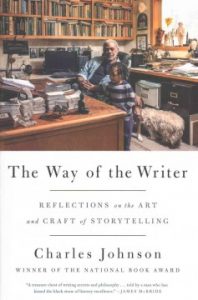 The Way of the Writer
The Way of the Writer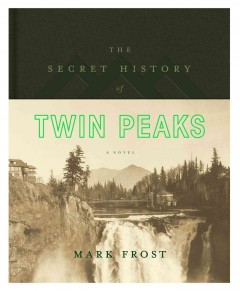 The Secret History of Twin Peaks
The Secret History of Twin Peaks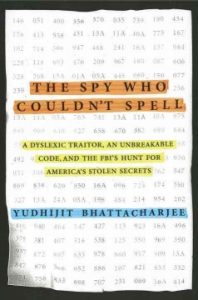 The Spy Who Couldn’t Spell
The Spy Who Couldn’t Spell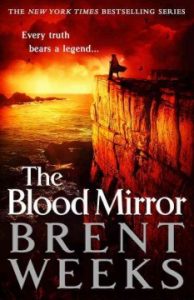 The Blood Mirror
The Blood Mirror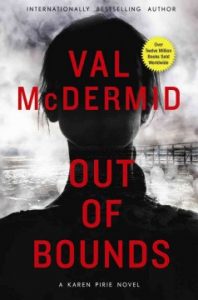 Out of Bounds
Out of Bounds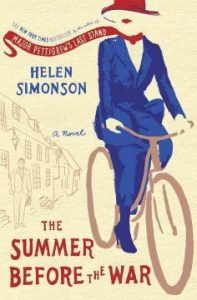 East Sussex, 1914. It is the end of England’s brief Edwardian summer, and everyone agrees that the weather has never been so beautiful. Hugh Grange, down from his medical studies, is visiting his Aunt Agatha, who lives with her husband in the small, idyllic coastal town of Rye. Agatha’s husband works in the Foreign Office, and she is certain he will ensure that the recent saber rattling over the Balkans won’t come to anything. And Agatha has more immediate concerns; she has just risked her carefully built reputation by pushing for the appointment of a woman to replace the Latin master. When Beatrice Nash arrives with one trunk and several large crates of books, it is clear she is significantly more freethinking — and attractive — than anyone believes a Latin teacher should be. For her part, mourning the death of her beloved father, who has left her penniless, Beatrice simply wants to be left alone to pursue her teaching and writing. But just as Beatrice comes alive to the beauty of the Sussex landscape and the colorful characters who populate Rye, the perfect summer is about to end. For despite Agatha’s reassurances, the unimaginable is coming. Soon the limits of progress, and the old ways, will be tested as this small Sussex town and its inhabitants go to war.
East Sussex, 1914. It is the end of England’s brief Edwardian summer, and everyone agrees that the weather has never been so beautiful. Hugh Grange, down from his medical studies, is visiting his Aunt Agatha, who lives with her husband in the small, idyllic coastal town of Rye. Agatha’s husband works in the Foreign Office, and she is certain he will ensure that the recent saber rattling over the Balkans won’t come to anything. And Agatha has more immediate concerns; she has just risked her carefully built reputation by pushing for the appointment of a woman to replace the Latin master. When Beatrice Nash arrives with one trunk and several large crates of books, it is clear she is significantly more freethinking — and attractive — than anyone believes a Latin teacher should be. For her part, mourning the death of her beloved father, who has left her penniless, Beatrice simply wants to be left alone to pursue her teaching and writing. But just as Beatrice comes alive to the beauty of the Sussex landscape and the colorful characters who populate Rye, the perfect summer is about to end. For despite Agatha’s reassurances, the unimaginable is coming. Soon the limits of progress, and the old ways, will be tested as this small Sussex town and its inhabitants go to war.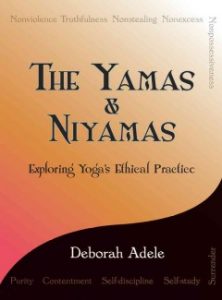 “The Yamas and Niyamas are the ten ethical foundations of yoga. Adele devotes a chapter to each Yama and Niyama that includes clear examples and explanations of the concepts followed by a series of questions to help readers spend time deeply exploring each principle. Whether you’re a yogi looking to deepen your practice, or someone who just wants to expand your way of living and thinking, you’ll find lots to think about here.”
“The Yamas and Niyamas are the ten ethical foundations of yoga. Adele devotes a chapter to each Yama and Niyama that includes clear examples and explanations of the concepts followed by a series of questions to help readers spend time deeply exploring each principle. Whether you’re a yogi looking to deepen your practice, or someone who just wants to expand your way of living and thinking, you’ll find lots to think about here.”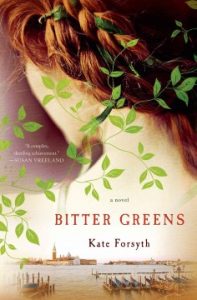 “I’m a sucker for retold fairy tales and Forsyth’s take on Rapunzel was particularly well done. Forsyth’s prose is gorgeous as she weaves in historical facts with fairy tale and original ideas. It was reminiscent of my favorite Gregory Maguire books but with a style
“I’m a sucker for retold fairy tales and Forsyth’s take on Rapunzel was particularly well done. Forsyth’s prose is gorgeous as she weaves in historical facts with fairy tale and original ideas. It was reminiscent of my favorite Gregory Maguire books but with a style 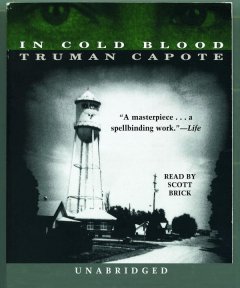 “I knew about this book from films that were made about it a few years back, but nothing could prepare me for the haunting narrative that Capote put together. His sympathy and ruthless attention to detail bring every detail of this crime, of its victims, and, especially, of its perpetrators, to life in a way that is uncomfortable, fascinating, and surprisingly modern. Scott Brick’s pitch-perfect narration gives extra life to the characters, and emphasizes the lingering effects of violence on all who are touched by it.”
“I knew about this book from films that were made about it a few years back, but nothing could prepare me for the haunting narrative that Capote put together. His sympathy and ruthless attention to detail bring every detail of this crime, of its victims, and, especially, of its perpetrators, to life in a way that is uncomfortable, fascinating, and surprisingly modern. Scott Brick’s pitch-perfect narration gives extra life to the characters, and emphasizes the lingering effects of violence on all who are touched by it.”